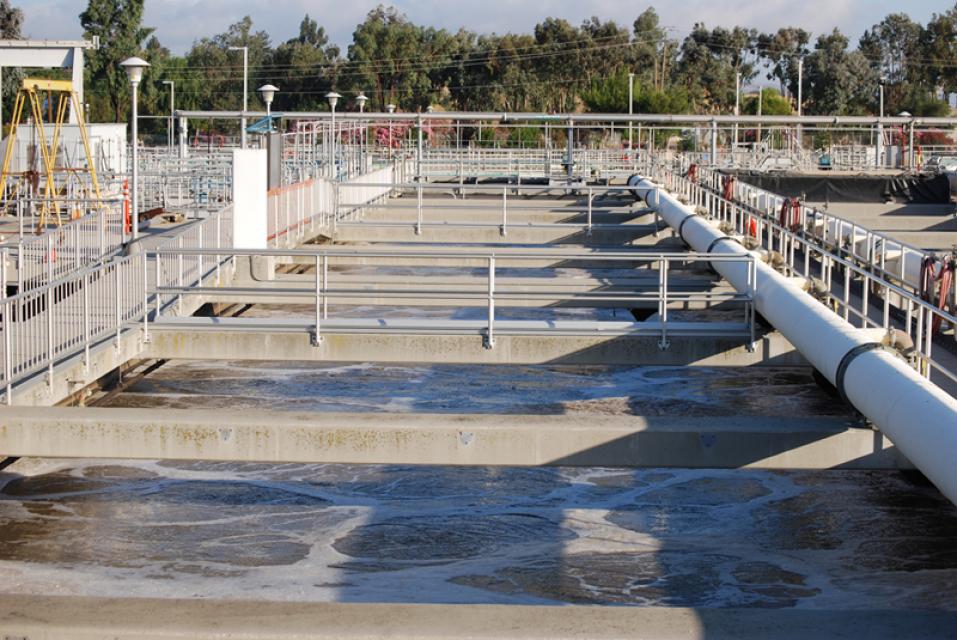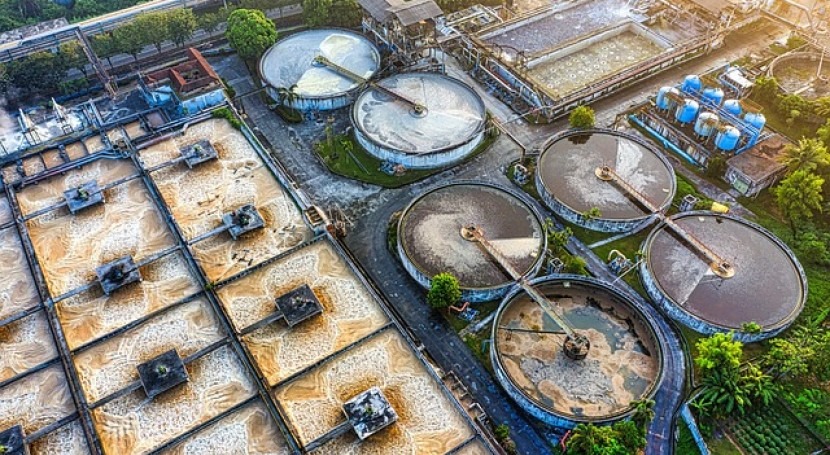Affordable Solutions for Large-Scale Waste Water Treatment Facilities
Affordable Solutions for Large-Scale Waste Water Treatment Facilities
Blog Article
Strategic Approaches to Improve Drainage Therapy Efficiency and Reduce Ecological Impact
In the realm of waste water treatment, the quest for boosted efficiency and decreased ecological influence is a perpetual difficulty that demands tactical remedies. As culture faces the critical to take care of water resources sustainably, a nuanced strategy ends up being important. The assimilation of innovative therapy technologies, energy-efficient processes, source recuperation approaches, boosted nutrient elimination techniques, and smart surveillance and control systems stands for a complex structure for dealing with these pushing concerns. Nonetheless, what exists at the core of this facility internet of methods is the potential to revolutionize the method we approach waste water treatment, not simply as a process of disposal, but as a beneficial possibility for development and environmental stewardship.
Advanced Therapy Technologies
Sophisticated membrane layer purification systems have revolutionized advanced wastewater treatment procedures, dramatically boosting the elimination of contaminants. This innovation has shown to be extremely reliable in eliminating a vast array of contaminants, including drugs, hefty steels, and natural substances, which are commonly challenging to get rid of through traditional treatment techniques.
In addition, membrane filtration systems supply various benefits over conventional treatment methods. Furthermore, these systems are extremely flexible and can be conveniently incorporated right into existing treatment plants or made use of as standalone systems for decentralized applications.
Energy-Efficient Processes
The assimilation of energy-efficient processes in wastewater treatment systems is important for optimizing resource application and lowering operational costs. By carrying out energy-efficient innovations, therapy plants can significantly lower their carbon impact and overall ecological impact. One crucial strategy to improving power performance in wastewater treatment is the utilization of innovative oygenation systems, such as fine bubble diffusers or surface aerators, which can boost oxygen transfer performance and minimize energy usage. Furthermore, incorporating energy healing systems, like anaerobic food digestion for biogas manufacturing or utilizing excess warmth for thermal processes, can assist balance out power needs and advertise sustainability.
Additionally, optimizing process control and automation with using innovative sensing units and monitoring systems can boost overall power performance by changing operations in real-time based upon actual demand and problems. Executing energy audits and on a regular basis checking power performance signs are important methods to recognize locations for renovation and track energy-saving initiatives successfully. In general, the fostering of energy-efficient processes in wastewater therapy not only benefits the setting however likewise adds to long-lasting expense savings and operational sustainability.
Resource Recuperation Techniques
With a concentrate on maximizing source application and sustainability in wastewater therapy systems, the implementation of source healing methods becomes a pivotal aspect in improving functional efficiency. Source healing approaches in wastewater therapy entail the identification and extraction of important sources from the waste stream, thus transforming what was once considered waste into a valuable property. By implementing resource recovery techniques such as nutrient elimination and healing, energy generation from organic issue, and the manufacturing of recyclable water, wastewater therapy plants can minimize ecological influence while optimizing effectiveness.

Enhanced Nutrient Removal Strategies
Carrying out innovative nutrient elimination techniques is vital for enhancing the effectiveness of wastewater therapy systems. Boosted nutrient elimination plays an important duty in reducing the ecological influence of treated effluent discharged right into water bodies. Among the crucial techniques made use of for improved nutrient elimination is the procedure of organic nutrient elimination (BNR), which involves the removal of nitrogen and phosphorus through biological procedures. This can be achieved via making use of specialized microbes that can transform nitrogen substances into inert nitrogen gas through denitrification, and accumulate phosphorus within their cells with a process called enhanced biological phosphorus elimination (EBPR)

Along with BNR, progressed treatment approaches such as membrane bioreactors (MBRs) and built marshes can additionally be used to enhance nutrient removal performance. MBRs use membranes to attain top notch effluent standards by properly removing nutrients and put on hold solids. Built wetlands simulate all-natural marsh procedures to eliminate nutrients via plant uptake, microbial activity, and sedimentation. By integrating these advanced nutrient removal methods right into wastewater treatment towns, sectors and systems can properly minimize nutrient contamination and secure the environment.
Smart Tracking and Control Equipment
Utilizing advanced technology, the integration of clever tracking and control systems transforms the functional effectiveness of wastewater treatment centers. These systems incorporate innovative sensing units and information analytics to continuously check crucial parameters such as pH levels, turbidity, dissolved oxygen, and circulation rates in real-time. By gathering and examining this information, operators can get useful understandings right into the performance of the therapy processes, allowing positive changes to enhance therapy effectiveness.
Smart surveillance and control over at this website systems also support remote surveillance capabilities, allowing drivers to access real-time data and control features from off-site places. This remote accessibility enhances operational versatility and responsiveness, allowing quick treatments in instance of system malfunctions or changes in influent top quality. In addition, the anticipating maintenance capacities of these systems help avoid devices failures and lessen downtime, inevitably boosting the overall dependability of wastewater therapy operations (Waste Water Treatment).
Conclusion
To conclude, critical techniques such as innovative therapy technologies, energy-efficient procedures, resource healing approaches, enhanced nutrient removal strategies, and smart tracking and control systems play an important role in boosting wastewater treatment performance and decreasing ecological effect. By implementing these techniques, wastewater therapy plants can improve their overall efficiency, reduce energy intake, recover important sources, and make sure conformity with ecological laws. These methods are essential for efficient and sustainable wastewater management practices.

In final thought, strategic strategies such as advanced therapy modern technologies, energy-efficient procedures, source recovery strategies, boosted nutrient removal methods, and wise monitoring and control systems play a vital role in enhancing wastewater therapy performance and minimizing environmental effect.
Report this page